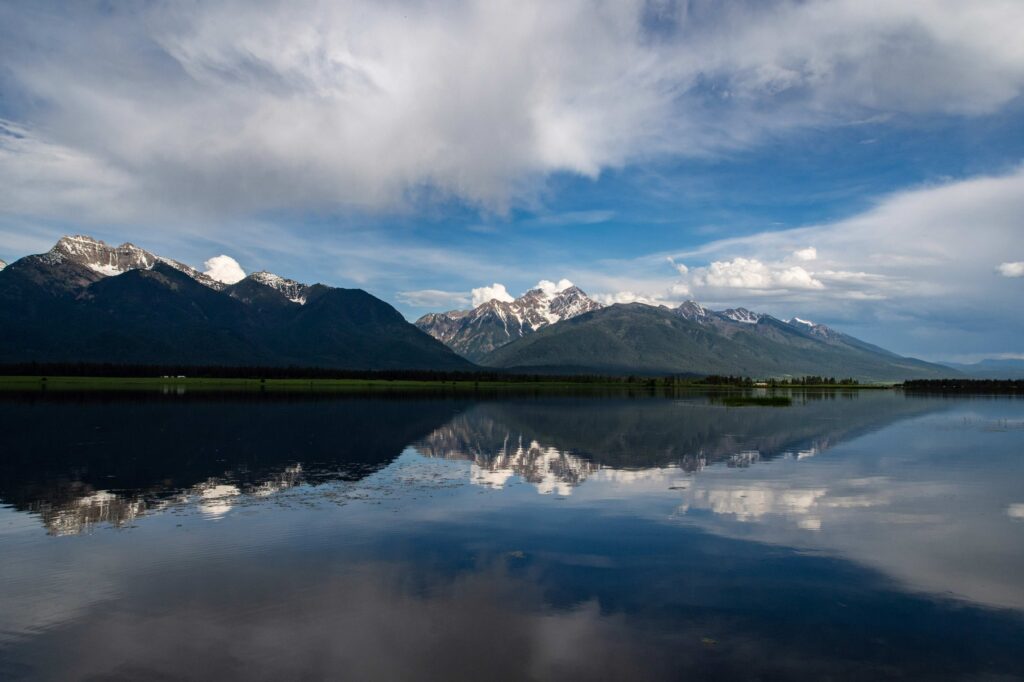Montana Trout Unlimited has an assignment for you. Go spend time on your nearest or dearest headwater stream in Montana. Take photographs (selfies are OK). Reflect on why that place is important to you, your family, and your friends, including those with fins, fur, or wings. Maybe you have clamored along Hidden Gem Creek to where it bubbles up through alluvium and begins flowing under deep shade and over moss-draped stones every year on your birthday just to be sure it, and you, are still fully alive. Maybe you’ve taken up the Tenkara rod and savor angling by stealth and simplicity. We need your photos and stories to help save the headwaters you value.
Whatever your story, wherever your special small water, we want to hear about it. Feel free to let your secret spots remain so by giving them nicknames. But know that disguising their names makes them no less vulnerable to Trump administration rollbacks in regulations that protect clean water and healthy habitat.
In his first 100 days POTUS Donald Trump signed an Executive Order asking the EPA and the Army Corps of Engineers to consider revoking the Clean Water Rule (CWR). The rule is meant to extend Clean Water Act protection to “ephemeral” or “intermittent” streams and many wetlands, which, in ontological terms, are the birthplaces and infants of our coldwater trout waters in Montana and, truthfully, all fisheries. Statistically speaking, the rule, when implemented, will apply to 60 percent of the stream mileage in the U.S. and roughly 20 million acres of wetlands. After years of Congressional and court haggling over whether or not to protect the precious beginnings of America’s water resources from pollution and dismemberment by granting them the same clean water standards set for larger, navigable waters, the Clean Water Rule was finalized in 2015. Eighty-seven percent of the one million public comments on the rule supported it and 83% of hunters and anglers strongly favor its application to small streams and wetlands.
Passage of CWR is a vital safeguard for all water users. By protecting the source from poisoning and physical destruction, it helps ensure clean drinking, irrigation, stock, and trout waters. While doing so, the rule also includes exceptions so that private landowners can continue to operate ditches, canals, ponds, irrigation systems, and the like for personal or commercial benefit as they have historically, without new water quality regulations. Nonetheless, the Trump administration is pushing to abort the rule and unshackle industry from having to help keep our water clean. Since we care about the health of the water that flows from our taps, grows our crops, slakes our livestock, and is home to our state and national fisheries, we cannot let this happen.
Montana can provide more gorgeous backdrops, and trout-filled snapshots than in any other state. Our personal stories of real places can illustrate that the threat is not abstract, but is real to people, places, professions and wildlife we love. Last week, I toured a $40 million mine restoration site on the headwaters of Montana’s famed Blackfoot River. A decades-long, state-led project to clean up and restore Mike Horse and Bear Trap Creeks has been a key reason that the Blackfoot has bounced back from a century of industrial logging and mining. Today anglers travel from around the globe for a chance at catching native and wild trout on the Blackfoot. Yet, small-scale silver mining continues on “intermittent” stretches of tributaries above the current Mike Horse cleanup site. If the Clean Water Rule disappears, those mine operators will no longer be obligated to care about sending new waves of heavy metals downstream through the meandering creeks that $40 million has brought back to life.
We will use our portfolio of your stories and photos to inspire other states to document their headwaters and to illustrate for the public and politicians what is at stake. If you need another push to get out the door, check out TU President Chris Wood’s tale of raising his kids on the Little Cacapon River in West Virginia, an intermittent stream covered by the CWR. (http://www.tu.org/blog-posts/little-kids-and-small-streams-deserve-the-clean-water-act) So get out there! Please send your stories and photos to [email protected]. We look forward to hearing from you.
-from Montana Trout Unlimited’s Spring 2017 Trout Line by David Brooks, executive director



